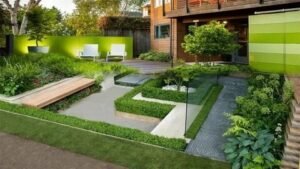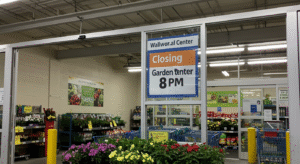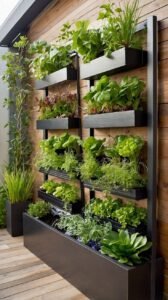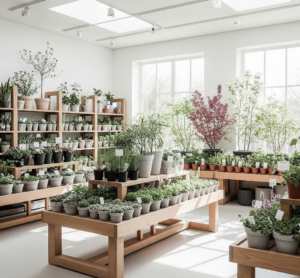Ideas For Garden Design
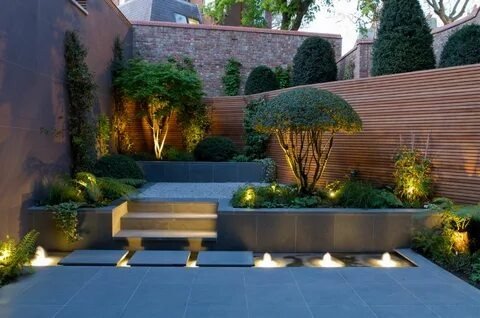
design garden
Gardens are not simply patches of green; they are extensions of our homes and expressions of creativity. A well-designed garden can serve as a calm sanctuary, a bustle of energetic social activity, or an amusement park for the senses, depending on one’s preference. This document covers numerous possibilities for garden design innovations, from choosing a style to hardscape features. Now, let’s explore the refined approach to developing an outdoor place of beauty and function.
Gaining Insight into the Possibilities of Your Garden
Please take time to look over your garden before making any design choices. Natural components such as sunlight, soil quality, and drainage would determine the plants for planting. These elements are not just factors to consider but are the very essence of your garden, connecting it to the environment. Wind patterns are equally important; while exposed gardens can benefit from windbreaks such as hedges and trellises, enclosed gardens might suffer the opposite effect. Also, how will soil composition affect the space? Sandy soil will suit drought-resistant plants because it can drain water quickly, while clay-rich soil that retains moisture will favor lush vegetation. Along with these tips, you can adjust your design to complement the space’s natural components. Understanding your garden’s natural features will make creating a tailored design easy.
Choosing a design for a garden is like selecting a fashion style. Design possibilities start from elegant cottage gardens to sleek modern designs. These gardens are versatile, allowing you to adapt them to your unique vision. Old English cottages had a design style that featured gardens that were overflowing with plant life. Such styles of garden planting fill the space with plant life of informal arrangements, stone pathways, and full flowering flower beds. Full blooms of roses, ivy, and foxgloves enable an unstructured blend, which, when combined, fosters a nostalgic environment. On the other hand, Zen gardens are perfect for individuals who wish to relax and let go of stress for meditation.
Dynamic Creative Approaches Organizing
While a garden should be pleasing to the eyes, a well-strategized garden should flow gently from one area to the next with a clear potion delineating distinct purposes. Outdoor spaces, whether intended for dining, relaxation, or play, can serve as a retreat, and zoning allocates spaces for these activities. A sunbaked patio is ideal for dining, while a nook surrounded by fragrant blooms is a perfect reading spot. While modern gardens embrace soft edges with naturalistic planting arrangements and wandering pathways, informal gardens have a rough edge and a smooth look to nature. Balance is crucial: too much structure feels controlling, while excessive randomness gives the impression of chaos. Attention grabbers draw eyes to the best features on a highlighted section of interest. . Even small gardens benefit from well-placed highlighted features.
Dynamic Planting Systems
Step by step, it reveals a unique and sophisticated landscape throughout the year. Harmony and depth stem from the growing of plants. Softeners are ground-cover plants, mid-level body-forming shrubs, and tall trees coming together to create a balanced and thriving nature with a flourishing ecosystem. Rotation or change in seasons helps maintain focus on the garden all year round. Spring gives life through blooming daffodils and tulips, summer shines through splendid sunflowers and hydrangeas, autumn brings fiery leaves to set the scene, and winter keeps it structured with evergreens. Choosing plants based on blooming stages allows for mitigating violence with colors in the garden.
Using Hardscape Elements
Plants bring a garden to life; hardscape elements add structure and functionality. Pathways, patios, and built-in features further enhance usability. Whether made of flagstone, gravel, or reclaimed wood, pathways facilitate movement within the garden. Pathways are composed of many materials, creating different feels: cobblestone provides old-world charm, while the sleekness of concrete is more suited for contemporary landscapes. While meandering paths evoke a sense of exploration, straight and geometric ones create order. Patios serve as a spot for tranquil lounging and relaxing dining. Seating, such as built-in benches, hammocks, or swing chairs, can be added to invite relaxation. Water features allow for the addition of sound—from the soft trickle of a fountain to a pond’s reflective stillness. Material choices shape personality, a garden’s personality. Natural stone and metals, while adding modern edges, integrate seamlessly with the environment. The aesthetics of a garden can easily be paired with sustainable options such as reclaimed wood or permeable pavers.
Lighting & Decorative Accents
Decorative garden lighting greatly enhances outdoor areas by enabling their use after dark while illuminating focal points. Pathway and tree lighting create an enchanting effect. Highlighting Spotlights, such as those that can be directed at a particularly beautiful tree or a unique sculpture, accentuate architecturally significant plants or sculptural elements and can produce dramatic lighting effects. Eco-friendly solar-powered lights harness stored energy within the day to illuminate spaces after sunset. Landscape accent pieces such as sculptures, colorful decorative pots, and mosaic stepping stones provide an artistic touch and make the garden colorful. Birds are drawn to water features, which become centerpieces and add motion to the area. The garden constantly changes with seasonal add-ons like summer lanterns or winter fairy lights.
Sustainability & Low-Maintenance Ideas
Sustainable practices in eco-friendly gardening increase resource efficiency while they are less intensive in maintaining gardening upkeep. Systems capture rainwater for irrigation, augmenting existing water sources, while organic compost provides nutrient-rich soil. Plants cultivated in the region that need little moisture and attention also benefit busy people who thrive with minimal intervention. Drought-tolerant plants, gravel mulching, and efficient irrigation are some features of xeriscaping water-wise landscaping. These changes also help busy people because maintenance gardens focus on long-blooming, hardy perennials, slower-growing, more rigid flowers, and tougher shrubs that need less attention.
Conclusion
Like any other art form, garden design is a constantly developing artistic practice. Design options are limitless, whether you’re framing a peaceful minimalist getaway, an explosion of flora, or a sanctuary for fauna. Consider different approaches to space, style, and functional elements to achieve the outdoor setting of your dreams that coincides with your lifestyle and personality. Now is the time to begin your vision garden. Start planning, sketching, or even planting today!

